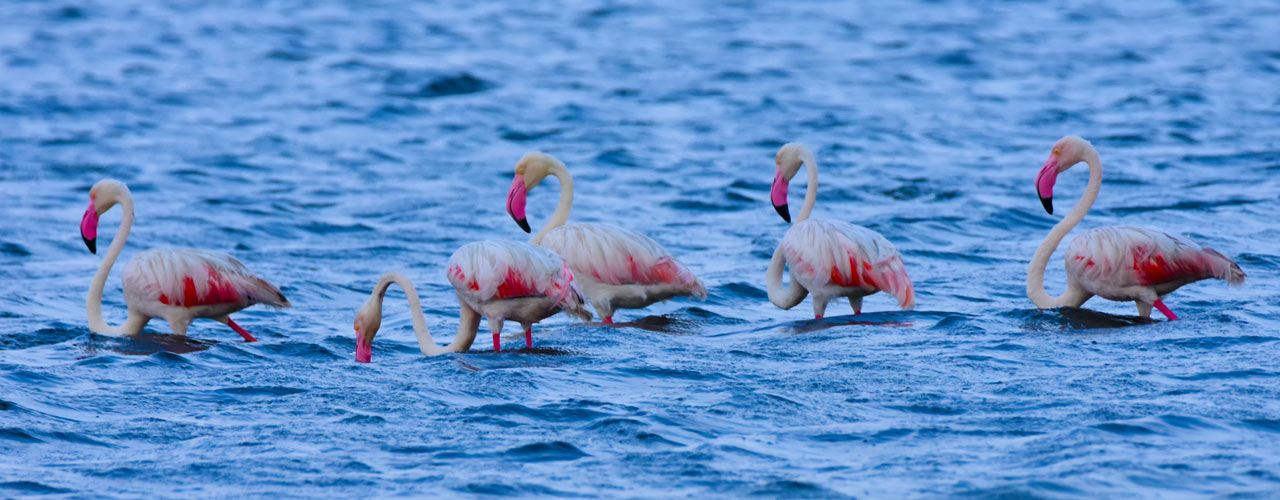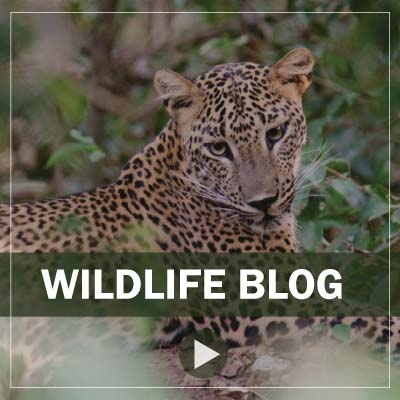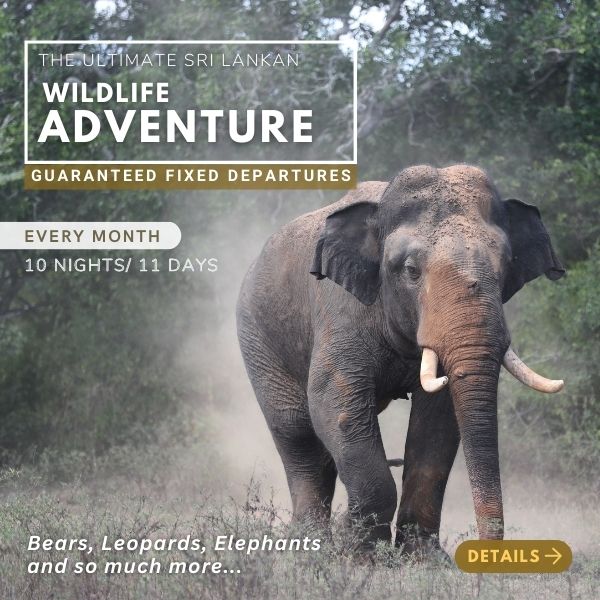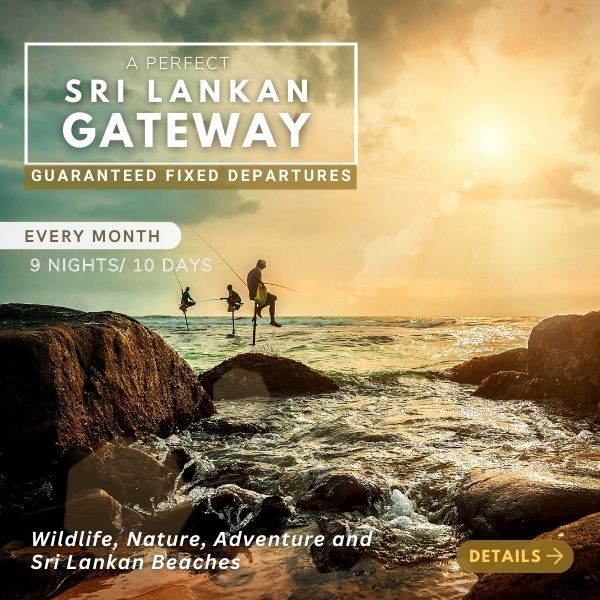Bundala
Bundala National Park, with 6216 hectares of lagoons, scrub jungles, saltpans and marshes, is the most important wetland sanctuary in Southern Sri Lanka, and famous for its impressive biodiversity and prolific birdlife. It is here that the migratory birds are wintering - resting and feeding by the picturesque lagoons and intertidal mudflats. And the sea turtles are nesting on the remote beaches and golden sand dunes.
The park is also home to a small population of elephants. Roaming the open wetlands and secluded beaches, they are easy to spot. In Bundala, you'll have a good chance of spotting leopards, spotted deers, sambars, crocodiles, wild boar, mongooses, monitor lizards and monkeys too.
The area was declared a wildlife sanctuary in 1969 and, in 1991, Bundala became the first site in Sri Lanka to be designated a Ramsar wetland.
Climate and vegetation in Bundala National Park
Located in the lowlands of Hambatota district about 250 km southeast of Colombo, Bundala National Park falls within the arid zone where the climate is hot and dry. The average annual rainfall is relatively low, ranging from 9,000 to 1,300 mm, and the driest season is between May and September.
The park consists of five shallow, brackish lagoons; interconnecting channels, saltpans, marshes and beaches. The vegetation is mainly dry thorny shrubs, but the biodiversity is immense: A total of 383 plant species have been recorded in the park, including 6 endemic and 7 endangered species.
Wildlife in Bundala
The rich birdlife and serene surroundings make Bundala a real paradise for birders. These wetlands are home to nearly 200 bird species, including several species of migratory waterfowl.
The rare black-necked stork and great thick-knee are the greatest birding highlights, but you may spot also the blue-tailed bee-eater, spoonbill, red shank, green shank, spot-billed pelican, blue-faced malkoha, brahminy kite, crested hawk eagle and brown shrike can be spotted, to name but a few. Many migrant and vagrant species winter in this region and, between October and March, it's possible to see over 10,000 shorebirds at once feeding in the shallow waters.
In addition to abundant birdlife, the wetlands are inhabited by 32 mammal species (out of which 5 are classified as threatened). Also, both marsh and estuarine crocodiles are found in Bundala, and four out of Sri Lanka's five species of sea turtles come ashore to lay their eggs in its coastal areas.
Crocodiles in Bundala
In Bundala, you can observe both species of crocodiles inhabiting the island. The estuarine crocodile, that is the largest reptile alive today, lives in the lagoons areas and the estuary of River Kirindi Oya, while the mugger crocodile dwells in the small freshwater lakes and in the upper regions of Kirindi Oya.
The Estuarine, or saltwater, crocodiles live in social groups. They spend most of their time trying to keep their body temperature stable. These crocodiles can swim large distances over open sea, which probably accounts for their wide distribution.
The mugger crocodile is found in fresh or brackish water. Since they like slow-moving, shallow waters, the lagoons in Bundala a perfect home to them. During the dry season muggers dig burrows in the mud to protect themselves from the heat, and they may travel long distances in search of water if their pool dries up.
Will it become a man's' world?
The male estuarine crocodile can grow to a length of seven metres and weigh around 1200 kg, whereas the smaller female much grows around three metres in length.
To provide her offsprings with protection, the female crocodile lays her eggs (around 50) a hole she digs in the sand, several metres away from the water. When the time comes for the eggs to hatch, she carries the newborns in the water and protects them until they are able to fend for themselves.
Despite all the attention and motherly care, very few baby crocodiles grow adults. If they fall prey to turtles and large fish, the adult male crocodiles may hunt them down to protect their own territory.
The temperature of the nest determines the sex of the juveniles. If the temperature is higher, around 33 degrees Celsius, the embryos are mostly males. At 32 degrees, 80% of hatchling will be female. As the global warming continues, we may witness some interesting changes in crocodile populations.
What are the crocs saying?
Crocodiles are considered as one of the most intelligent reptiles. Their different calls serve as a very refined mode of communication. A hatchling chirp alerts the female when offspring is ready to emerge. Juvenile crocs perform a distress call when they feel in danger, and a long and deep growl is a courtship bellow.
For humans, the most important croc song to learn is a hiss or cough. If you hear this coming from the marsh, watch out! It is the call the crocs use to warn off intruders just before they attack.
Safari at Bundala
There are 3 safari options available for the guest.
1. Morning Safari (6.00am)
2. Afternoon Safari (2.30pm)
3. Full day Safari
The safari would take place with an experienced guide in specially modified comfortable jeeps for unique safari experience. The tour could be more customized for guests for their preferences (Family safari, honeymoon safari, photography safari etc.).
Tour in brief
Initial meeting with the Ecoteam crew and the safari guide, a brief of the tour will take place in the entrance to the Bundala Safari. For the morning half-day tour, the starting time will be at 6 a.m. while the afternoon tour begins at 2.30 p.m.
After entering the national park with your guide in a jeep, you will be able to spot several species of birds and other animals that have made their homes in this sanctuary. The guide will explain about the various interesting attributes as you will learn and enjoy about the flora and fauna of Bundala.
You will be taken through most of the Bundala National Park, covering the wetlands, grasslands, forest patches, etc. We will make longer stops at certain watering holes for unique photography opportunities.
Finishing the safari, either round 11 a.m. or around 6 p.m. you will be dropped at the park entrance.













